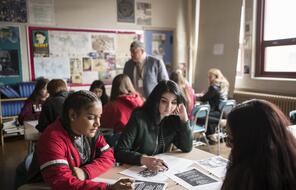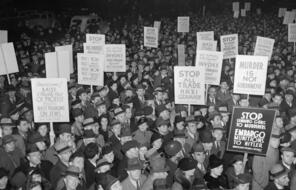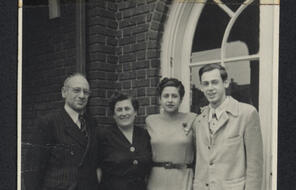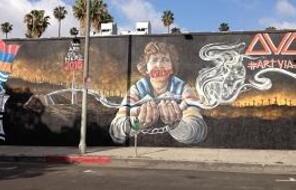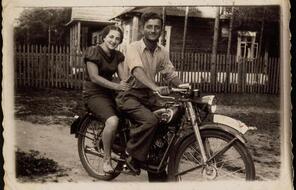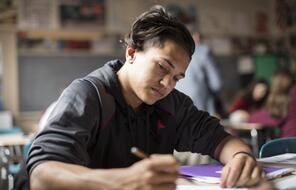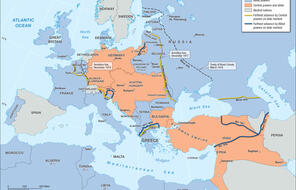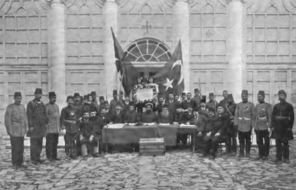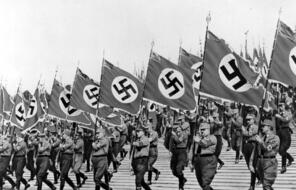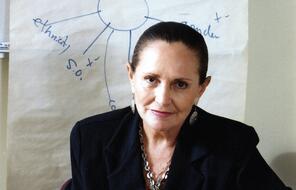Bullying at School
A bullying incident in school is often the first time a teenager is confronted with the decision of whether to be an upstander or a bystander. In a world full of injustice, suffering, and other social problems, the choice to participate can actually originate very close to home.
The following stories highlight the power of students to make positive change by taking seemingly small actions in response to bullying in their own school communities.
In Canada, two students responded this way when a classmate was taunted because of what he wore:
Two Nova Scotia students are being praised across North America for the way they turned the tide against the bullies who picked on a fellow student for wearing pink.
The victim — a Grade 9 boy at Central Kings Rural High School in the small community of Cambridge — wore a pink polo shirt on his first day of school.
Bullies harassed the boy, called him a homosexual for wearing pink and threatened to beat him up, students said.
Two Grade 12 students — David Shepherd and Travis Price — heard the news and decided to take action.
"I just figured enough was enough," said Shepherd.
They went to a nearby discount store and bought 50 pink shirts, including tank tops, to wear to school the next day.
Then the two went online to e-mail classmates to get them on board with their anti-bullying cause that they dubbed a "sea of pink."
But a tsunami of support poured in the next day.
Not only were dozens of students outfitted with the discount tees, but hundreds of students showed up wearing their own pink clothes, some head-to-toe.
When the bullied student, who has never been identified, walked into school to see his fellow students decked out in pink, some of his classmates said it was a powerful moment. He may have even blushed a little.
"Definitely it looked like there was a big weight lifted off his shoulders. He went from looking right depressed to being as happy as can be," said Shepherd.
And there's been nary a peep from the bullies since, which Shepherd says just goes to show what a little activism will do.
"If you can get more people against them . . . to show that we're not going to put up with it and support each other, then they're not as big as a group as they think they are," he says. 1
At Orange High School in Pepper Pike, Ohio, students responded in a different way when they witnessed bullying in their school. They began by trying to learn more about where bullying was happening. After surveying classmates about where they had witnessed bullying, students created maps that showed where bullying incidents commonly took place. "Bully hotspots" included the cafeteria, media lab, and locker rooms.
Explaining the motivation for the project, one student said, “We wanted to spread awareness because people need to know what bullying is. People need to know that it exists in our school. I think addressing it and defining it and spreading awareness that it exists is the first step in preventing and combating it.” 2
Because some of the acts of bullying had been rather subtle, some students either did not recognize them or felt unsure about naming them as bullying. To address this problem, student leaders created a “flash freeze” demonstration to dramatize what bullying looks like so that other students could recognize it and call it out more easily. The demonstration showed students frozen in mid-action, portraying an incident of bullying. Other students in the demonstration would then name the actions, using words like physical, verbal, exclusion, and cyber-bullying. The map of bullying “hotspots” and the demonstrations opened up a larger conversation about how to create a safer school and made it more difficult for some students to ignore bullying when they saw it happening.
One student talked about how the project affected his future choices:
I got made fun of for my name because it didn’t sound American, so I was really quiet. I never really talked in school ’cause I was scared of being made fun of. And when you don’t talk, you don’t make friends. It’s a chain reaction. It just gets worse and worse. You lose your confidence. You don’t want to speak to anyone. So, I guess doing this project really helps. Whenever I see someone getting bullied, I step in. No matter what age they are, if I know them or not, it doesn’t matter. Because I just think about how much I would have loved for someone to step in when I was getting bullied. 3
Connection Questions
- Experts say that bullying has two key characteristics: repeated harmful acts and an imbalance of power between perpetrator and victim. Education journalist Kim Zarzour explains, “If it involves repeated, malicious attempts to humiliate a helpless victim, if the victim is fearful, does not know how to make it stop, then it’s bullying.” Do you agree with this definition? How do you define bullying? What kinds of words and actions could be included in your definition? How is bullying online different from bullying in person?
- How did the students at Central Kings Rural High School and Orange High School respond to bullying? What did their responses have in common? In what ways were they different? How might these responses have affected those who were victims of bullying? How might they have affected perpetrators of bullying or students who were silent bystanders?
- Often, offering simple and immediate encouragement to people who have just been bullied can make a big difference. Psychologist Elizabeth Englander points out that victims of bullying consistently tell researchers that this type of upstander behavior is one of the most helpful responses:
What helped the most was having somebody who came up to them and said, “Don’t listen to him, he talks like that to everyone. There’s nothing wrong with you. Why don’t you come and eat lunch at my table. Don’t worry about that.”
Why do you think that small, simple gestures of kindness can make a big difference to the victims of bullying? What are some other actions that peers can take to be upstanders against bullying? - Is bullying an accepted behavior in your school? Is being an upstander an accepted behavior? What steps can a community take to change its social norms (the behavior and language that a community considers acceptable)?
- What strategies does your school use to address bullying? Which strategies are most effective? Which are least effective? What do you do in your school to help combat bullying? In what areas do you need more support from your peers, teachers, parents, or administrators?
- When Holocaust survivors speak to young people in schools, they often encourage them to stand up to bullying. Lisl Bogart (see reading, What Difference Can a Word Make?) told students, “I want to ask you today to be upstanders and not bystanders. When you see another student being picked on for being different, stand up for him.” Why might Holocaust survivors make a connection between their own personal stories and the importance of standing up to bullying?
- 1“Bullied student tickled pink by schoolmates' T-shirt campaign,” CBC News Canada, last modified September 18, 2007, accessed July 12, 2016.
- 2Transcribed from “Students Map Bully Zones to Create a Safer School” (video), Not in Our Town website, accessed July 12, 2016.
- 3Transcribed from “Students Map Bully Zones to Create a Safer School” (video), Not in Our Town website, accessed July 12, 2016
Get the Handout
How to Cite This Reading
Facing History & Ourselves, “Bullying at School”, last updated August 2, 2016.



